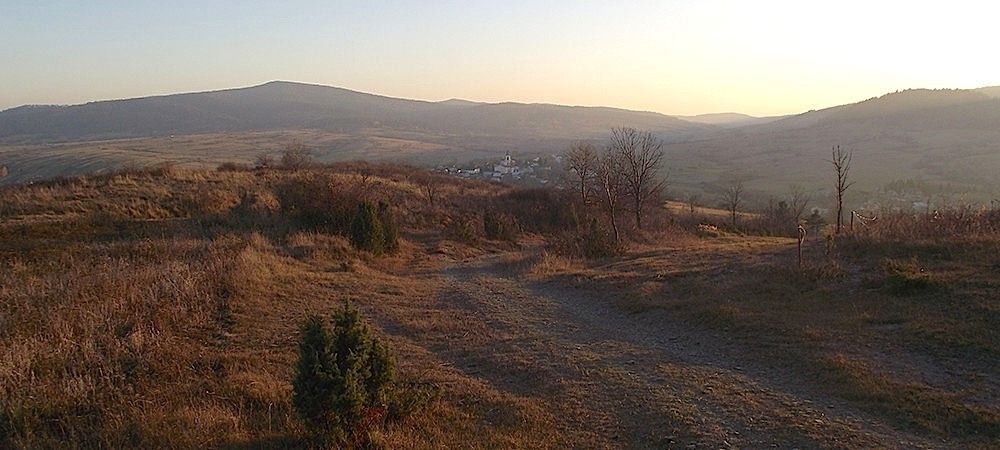
Jaśliska
There is no doubt that Jaśliska is an iconic place. However, to appreciate this village, lost among the low mountains of Beskid Niski, one needs a special kind of perception. Those who have it, are delighted with Jaśliska – those who do not will never understand its phenomenon.
Jaśliska lies 30 kilometres away from Krosno, but it is well worth making the journey in search of magic realism, which is so difficult to notice among the bustle of everyday life. Everyone must discover it for themselves, though not necessarily on their own as wanders around the Beskid Niski taste best in the company of friends. Still, a solitary journey may be a deeper experience, reaching closer to the sources of this magic realism.
The more concrete attractions of Jaśliska are its extremely interesting history and the wooden architecture which earned the village a place on the Wooden Architecture Trail.
The history of Jaśliska starts with the establishment of the town of Hohenstath (Tall Town) by Casimir III the Great in 1366. In 1434, it passed into the hands of the Roman Catholic bishops of Przemyśl, and remained a Latin island on the sea of Lemko Greek Orthodox faith for centuries. This is probably why the owners always made sure the Roman church was appropriately grand, which is apparent also today when you stand in the main town square and look at the imposing building of the late Baroque St Catherine’s church.
It was built in the middle of the 18th century with funds provided by the then bishop of Przemyśl Aleksander Antoni Fredro, who did not live to see the church consecrated. Extended just before the outbreak of the First World War, it is one of the most beautiful churches in the region and an important place of worship of St Mary. The Baroque main altar contains a miraculous painting of Saint Mary of Jaśliska, Mother of God and Queen of Heaven and Earth. The painting is much older than the altar and the church, and may have been painted as early as the 15th century. In any case, it has been surrounded with worship in Jaśliska by the faithful of both the Roman and Greek rite from both sides of the border since the 17th century. The painting was crowned in June of 1997 by Pope John Paul II during the canonisation mass for St John of Dukla in Krosno.
It may be difficult to believe today, but until the middle of the 17th century Jaśliska was a wealthy town, made rich by trade, especially in Hungarian wine. According to the law passed by the Sejm in 1506, wine could only be brought to Poland by Hungarian tradesmen, who then had to store it in certain fixed places, including Jaśliska and Dukla. This is why Jaśliska has many sizeable, beautiful and still not fully explored cellars, and why the paradoxical situation can be observed here, where an ordinary block-shaped building from the times of Edward Gierek hides beautiful Renaissance cellars.
The privilege of storing Hungarian wine was the envy of other towns, notably Krosno, whose citizens made many attempts at evading and limiting it, for which they were, for example, chastised by king Sigismund II Augustus in 1559. Only in the following century did a Krosno tradesman, Wojciech Portius, manage to take over the wine trade, but wine was still stored in Jaśliska until the time of the Partitions.
The town never returned to its former glory and, to make matters worse, in the 1930s it lost its town privileges. After the war, it became the seat of the district authorities, but in 1976 the District Council was abolished and Jaśliska was incorporated into the District of Dukla. The historic town hall fell into disrepair and did not see the new millennium, having been replaced with a new building, which shares with the old one only the name and the magnificent and mysterious cellars.
However, the weaker the body, the stronger the spirit. It was first noticed by few, but now Jaśliska is visited by numerous wanderers through the Beskid, appreciated in literature and made popular by film. Its wooden architecture, preserving the old layout of the town, has become an important attraction of the Wooden Architecture Trail, and the route to the Slovak Čertižné with its unusual signposts has become a must see for every ambitious and adventurous traveller. Jaśliska is now also the seat of district authorities again.
So, can you appreciate magical realism? Visit Jaśliska and see if you can.
Jaśliska photos - Facebook
More about this part of the Beskid Niski – Kamień Nature Reserve
